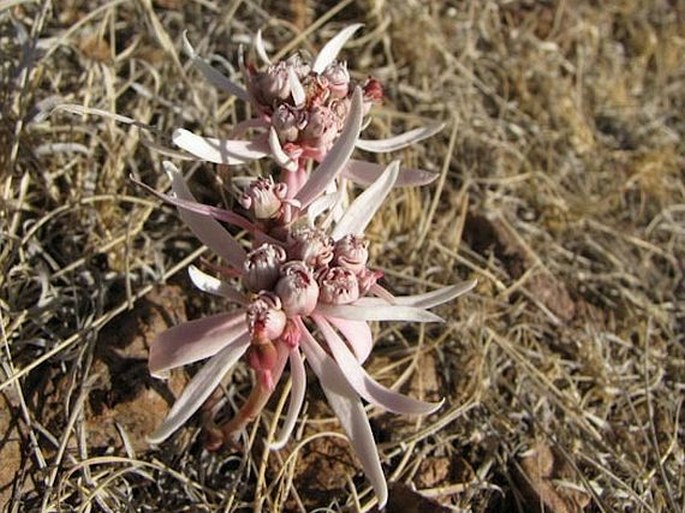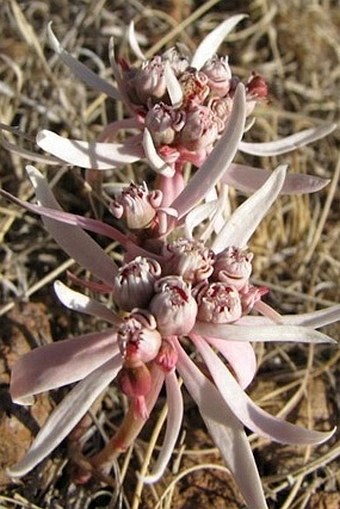Syn.: Poinsettia radians (Benth.) Klotzsch et Garcke
Family: Euphorbiaceae Juss.


Distribution: Arizona, New Mexico, Texas, North to South Mexico with exception of Eastern coastal states.
Ecology: Grows in well drained soil in dry, sunny areas in desert grasslands and in oak, pinyon and juniper woodlands. Blooms in spring.
Description: Stems up to 25 cm tall but usually much less, multiple, herbaceous, sometimes hairy and upright to decumbent, from thick tuberous rootstock (caudex); the stems die back at the end of growing season. Flower stalks emerge before the leafs in the spring. The leaves are sessile or short petioled, linear-lanceolate shaped, green, sometimes hairy. The cyathia contain both male flowers with yellow anthers and a central female flower. The cyathia are in clusters above white or pink, spreading, linear-lanceolate bracts of varying sizes at the tips of fleshy, leafless, pinkish green or redish brown flower stalks. The female flowers develop into hairless typically euphorbia 3-lobed drooping, redish to brown seed capsules.
Threat and protection: This Euphorbia is endangered and listed in CITES Sch II.
Notes: This is a very unusual plant which can be noticed only in its short flowering period. In cultivation it is usually grown with its caudex above ground to be seen even during its dormant period.

These images were taken in USA, Arizona, Huachuca Mountains, Parker Lake (May 2009).


